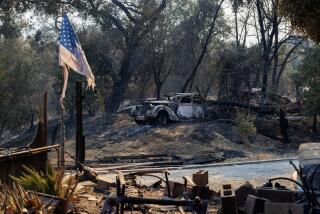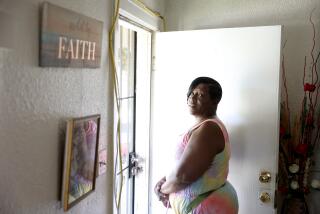California insurer of last resort says it’s not prepared for a big disaster

California’s property insurer of last resort told lawmakers that it’s financially unprepared to cover the costs of a major catastrophe in the state.
The plan now faces $311 billion in potential losses, up from $50 billion six years ago, California FAIR Plan President Victoria Roach said in a state legislative hearing Wednesday.
“We don’t have a lot of money sitting around,” she said. “Our rates are not adequate. If we have a major event, we’re going to look to the voluntary market — which is already in a precarious situation — to cover our losses.”
The state-sponsored plan has grown rapidly as private firms including State Farm General Insurance Co., Hartford Financial Services Group Inc. and Allstate Corp. have retreated, citing the double whammy of increasing natural disasters and state-imposed limits on premiums.
The plan now covers about 370,000 homeowners, more than double the number five years ago. By next year, its rolls could expand to 500,000, Roach said, further enlarging the potential losses.
The warning came a week after a Bloomberg Green investigation revealed how state-backed insurance plans in California and other disaster-prone states are largely unprepared for the growing costs of wildfires and hurricanes.
The plan has about $200 million “in surplus,” Roach said. It doesn’t make its finances public, nor is it subject to the same kinds of reserve requirements that apply to private insurers.
“We’re one bad fire season away from complete insolvency — it feels like a big gamble,” said Assemblymember Jim Wood, a Democrat from Sonoma County. “If this were on Wall Street, I’m not sure you’d be able to get away with this.”
The plan can’t raise consumers’ premiums to an amount that would cover a shortfall because state restrictions bar it from factoring the cost of reinsurance into its rates, Roach said.
Roach’s testimony also set the stage for state Insurance Commissioner Ricardo Lara, who’s pushing to allow private insurers to consider future climate risks and the cost of reinsurance when they set premiums, as long as they agree to provide a certain share of coverage in wildfire-prone areas. Existing rules only allow them to consider historical data and prevent them from basing premiums on reinsurance.
On Thursday, Lara’s office released a 16-page draft regulation that includes a proposal to allow modeling of wildfire exposure. He said the changes would bring private insurers back to the market, alleviating strain on the FAIR plan.
“It’s clear that we can no longer look solely to the past to help guide us to the future,” he told reporters.
More to Read
Inside the business of entertainment
The Wide Shot brings you news, analysis and insights on everything from streaming wars to production — and what it all means for the future.
You may occasionally receive promotional content from the Los Angeles Times.









